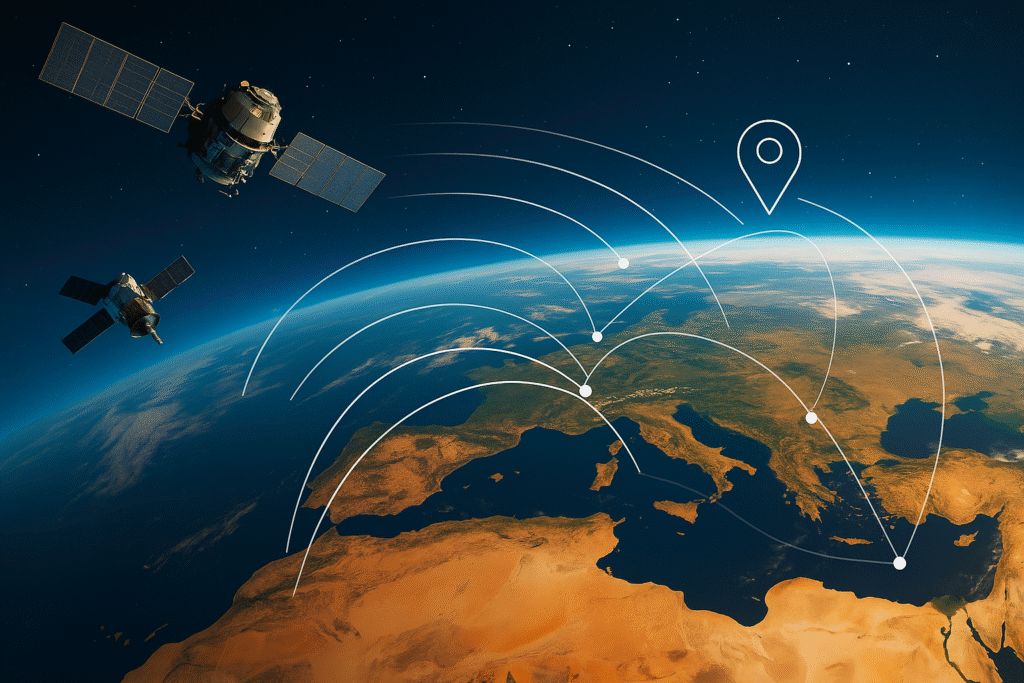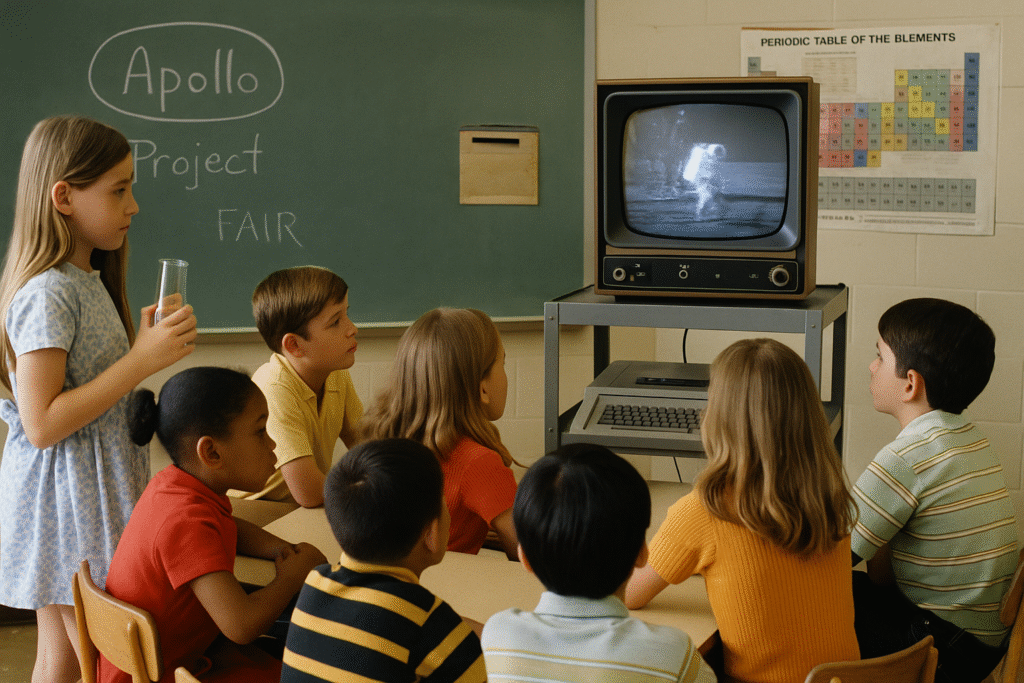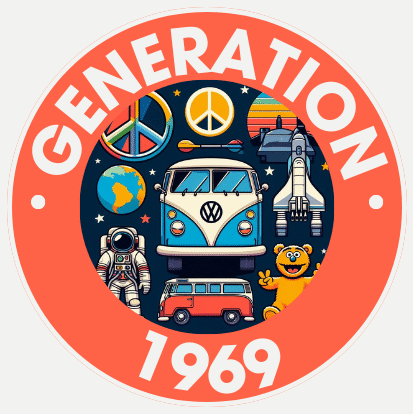🚀 The Apollo Effect: How a Moonshot Fueled Innovation
The Cold War, the space race, and the urgent need to innovate.
Everyone remembers that epic moment when Neil Armstrong stepped onto the moon, right? But, the story behind that giant leap for mankind started way earlier. We’re talking about the heated atmosphere of the Cold War. The U.S. and the Soviet Union were in this epic face-off, and space was the new battleground. The moon landing wasn’t just about space. It was about showcasing supremacy. That’s what fueled some serious rocket science and tech breakthroughs back in the day!
NASA became a hotbed for innovation. The urge to win the space race meant that the country rallied its best minds, pushing boundaries and fast-tracking developments that would probably have taken decades otherwise. There was this crazy drive to innovate, compete, and succeed. And boy, did it lead to some jaw-dropping discoveries.
Let’s not forget how this urgency propelled tech advancements across various fields. Cutting-edge technologies that were just a blip on the horizon suddenly became a priority. Companies and researchers weren’t just racing towards the moon; they were racing to transform how we live and work on our planet. It was about proving a point, sure, but it pushed humanity forward like nothing before.
The role of NASA can’t be overstated. They were the binding force pulling together brilliance from diverse fields to make the impossible, possible. While the astronauts were superstars, the engineers, mathematicians, and scientists were the unsung heroes making sure each mission was a success. An impressive nod to cross-discipline collaboration.
💻 From Moon to Microchip: How Apollo Shaped Modern Computing
The Apollo Guidance Computer and the birth of today’s digital world.
Think computers today are powerful? Well, back in the ’60s, the computing scene was radically different. Enter the Apollo Guidance Computer (AGC), the little machine that punched way above its weight and helped humans hop over to the moon. This wasn’t your typical room-sized computer from that era. It was compact, genius in its design, and it had to be mighty reliable. It was basically the heartbeat of the Apollo missions.

This amazing piece of tech showcased how miniaturization could lead to significant advancements. Engineers had to invent new ways to pack power into smaller devices. The innovations they cooked up for the AGC paved the way for modern computing as we know it. It was a game-changer, lighting the path from massive mainframes to the sleek, powerful devices we’re all addicted to nowadays.
Those high-stakes missions pushed the boundaries of software development, leading to methodologies and programming languages that were ahead of their time. These advances back then laid the groundwork for the versatile and adaptable software ecosystems we see today. So, every time you swipe or tap on a screen, give a silent thanks to those brilliant coders who blazed the trail.
The ripple effect of this isn’t just seen in computers but transcended into everyday technology. What was once niche tech for navigating outer space became vital tools right here on Earth. Those semi-conductors that were revolutionary back then? They’re now critical components in your smartphones, laptops, and almost everything digital.
So, whether it’s sending emails or streaming your favorite shows, remember that the need to conquer space back in the 1960s is still echoing in our digital universe. It’s a testament to a time when groundbreaking ideas met the brave ambition of exploring the unknown.
🔥 Engineering the Impossible: Material Science and the Spacecraft Revolution
How spacecraft design led to everyday tech innovations on Earth.
Spacecraft weren’t just rockets with a bunch of wires and hope; they were masterpieces of material science and engineering. To handle the extreme conditions of space, scientists had to dream up and create materials that could withstand intense heat, radiation, and vacuum. This drove some unbelievable breakthroughs in materials that went far beyond just space travel.
One huge innovation was in thermal protection systems. I mean, that heat shield technology was crucial. Imagine those early space capsules re-entering Earth’s atmosphere at blazing speeds—without top-notch materials, they’d have melted like ice on a hot skillet. This tech now plays a part in many everyday products, from more durable cooking pans to the materials in our cars.

Even beyond these heat shields, the technologies developed led to aircraft that are stronger, lighter, and more efficient. Engineers honed their skills in crafting designs that cut drag and improved speed, applying this knowledge to improve the airplanes we hop onto today. It’s one of those unsung heroes of tech transfer, where lessons learned from space travel trickled down into consumer air travel.
It wasn’t just about flashy rockets or sleek airplanes. Those same innovations inspired huge advancements in lighter buildings, improved sporting goods, and even the insulation in our homes. We’re talking about the kind of advancements that might have seemed trivial back then but ripple through countless aspects of our daily lives now.

📥 Want a copy to save or share?
Click here to download the full infographic (PDF)
The idea of immediate spin-off technologies came into its own during this era. People at the time might not have grasped it, but these advances showed how invention bred more invention, leading to creations beyond what was originally imagined. This domino effect of ideas sparked industries and innovations that are still alive and well in our world today.
📡 From Space to Screen: Communication Breakthroughs That Shrank the World
How lunar missions accelerated satellite and global connectivity.
The moon missions were not just about giant leaps but also about bridging gaps—specifically, through the advancements in communication technology. Remember, they had to communicate with spacecraft a quarter of a million miles away! This sparked a revolution in the way we think about and use technology to talk to each other.
One big game-changer that emerged was satellite communication. Before the Apollo era, the concept of using satellites to connect points on Earth was just getting started. The need to reliably and quickly communicate with astronauts led to rapid advancements. And guess what? This directly played into the explosion of global communications, including TV, radio, and eventually the internet.

These early technologies set the foundation for developments like GPS, which we all pretty much rely on today to get from point A to point B without getting lost. Imagine a time without GPS, and you’ll realize just how impactful those space-driven advancements really were.
The journey to the moon showed that long-distance communication could be way more dependable and instantaneous than ever before. It wasn’t just limited to space; it transformed how information was sent across the globe, making the world feel smaller and more interconnected.
You probably don’t even notice the technology making it possible for you to connect with anyone, anywhere, at any time. But it’s there. Every time you call overseas or even stream a video live from the other side of the world—there’s a trace of that lunar magic making it happen. Satellite technology has truly brought us closer together.
🌱 Inspiring Generations: The Cultural Legacy of Apollo
How space exploration fueled education, imagination, and future industries.
The moon landing wasn’t just a momentary blip on the radar—it created ripples that are still felt across technology and culture today. It catapulted STEM education into the spotlight, inspiring generations to explore fields in science and tech. Remember all those kids inspired by astronauts? Many of them became innovators who would push the boundaries in various tech industries.

That legacy didn’t just stop at motivation. Look at the technology we use daily—everything from medical devices to robotics shares DNA with the tech inspired by those moon missions. Scientists didn’t hang up their boots after returning from the lunar surface; they continued pushing boundaries, taking those lessons forward into countless other sectors.
SpaceX is a prime example of this continued exploration. They’re picking up where NASA left off, blending past innovations with cutting-edge exploration tech. This keeps the spirit of discovery alive and fuels further advancements in emerging technologies like reusable rockets.
Those once-a-dream elements from sci-fi are now woven into our real lives. The moon mission set a precedent for grand ambitions. Today, we see it reflected in ambitious pursuits like Mars exploration and advanced AI.
This legacy is not just about technology; it’s also about inspiring a culture of curiosity and the will to overcome challenges. Just as the Apollo missions were audacious in their goals and execution, they left us with the enduring belief that with the right mix of inspiration and perseverance, the sky truly isn’t the limit.
🌕 Inspired by Apollo?
Which modern tech invention do you think owes the most to the moon landing? Let us know in the comments—we’d love to hear what you found most surprising or inspiring.

4 thoughts on “How The 1969 Moon Landing Impacted Technology Development”
It’s fascinating how a single historical event like the moon landing triggered such a ripple effect across multiple industries, from computing to materials science. One question that comes to mind is whether the pace of innovation we saw post-Apollo could be replicated today with modern space missions like Artemis. Do you think today’s private-public partnerships in space exploration are likely to produce similarly impactful technological breakthroughs, or has the dynamic of innovation shifted too much? Also, were there any lesser-known inventions from the Apollo program that didn’t gain widespread use but had potential?
Thanks so much for your thoughtful comment! You’re absolutely right—the moon landing created a massive ripple effect, pushing boundaries not only in aerospace but across computing, materials, telecommunications, and more. It’s one of the clearest examples of how a bold goal can drive technological leaps.
Regarding Artemis and modern private-public partnerships, I do think we’re entering another exciting era of innovation, though the dynamics have definitely shifted. With companies like SpaceX and Blue Origin in the mix, there’s a stronger focus on cost-efficiency, reusability, and even commercialization, which could lead to breakthroughs in propulsion, AI, life support, and sustainable energy systems. However, the “moonshot” mentality of the 1960s—where budget constraints were looser—was a unique driver of risk-taking and pure innovation.
As for lesser-known inventions, one that comes to mind is the development of advanced insulation materials—like aerogels—which were explored during Apollo but only found widespread use much later. Also, the early advances in biomedical monitoring and miniaturized electronics for astronauts paved the way for much of today’s wearable tech, even if those specific Apollo-era tools didn’t go mainstream immediately.
Great questions—thanks for sparking this deeper conversation!
This was a fascinating read! I had no idea just how much the moon landing influenced everyday technology. It’s incredible to think that innovations from the Apollo program, like integrated circuits and freeze-dried food, have become so integral to our daily lives. Your breakdown of these advancements really opened my eyes to the broader impact of space exploration. I’m curious, are there any other lesser-known technologies we use today that originated from the Apollo missions? Thanks for shedding light on this!
Thank you so much for your thoughtful comment! I’m really glad the post helped show just how far-reaching the Apollo program’s impact has been—it’s amazing how much space-age tech ended up right in our homes.
You’re absolutely right about integrated circuits and freeze-dried food. And yes—there are some really cool, lesser-known innovations too! A few that often surprise people:
???? Cordless power tools – Developed with Black & Decker for lunar drilling, they led directly to cordless drills and vacuum cleaners.
???? Memory foam – Originally created to improve crash protection in aircraft, now found in everything from mattresses to sports gear.
???? Reflective insulation (Mylar) – Used to regulate temperature in spacecraft, and now in emergency blankets, home insulation, and even marathon capes!
????️ Digital image processing – Refined during Apollo for mapping the Moon, it laid the groundwork for things like CAT scans and MRIs in medicine.
Thanks again for reading—and keep those questions coming! Space exploration has a deeper footprint in our daily lives than most people imagine. ????